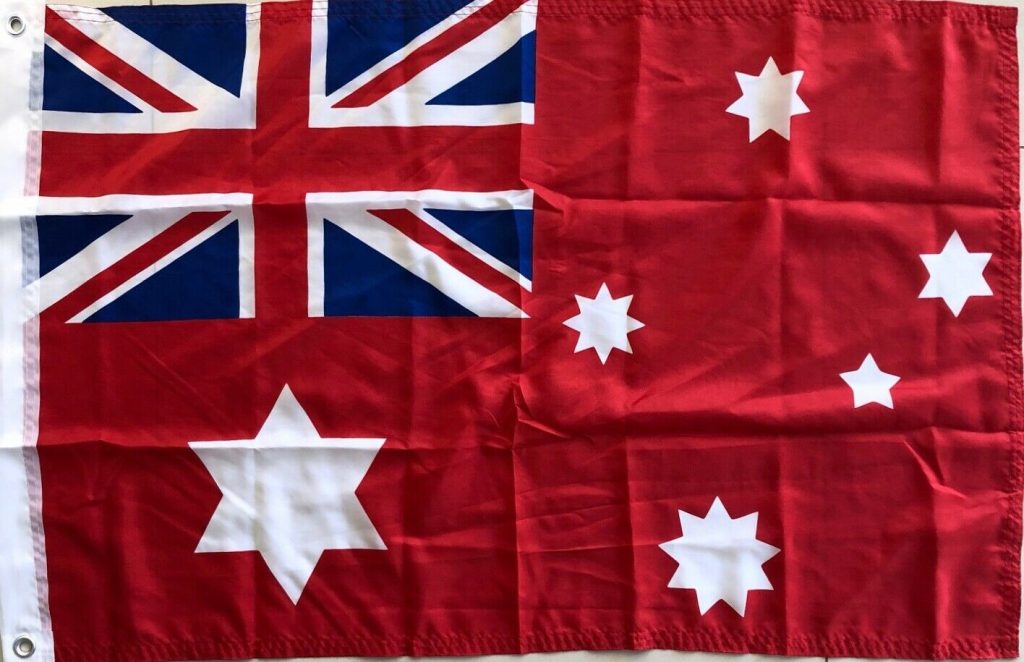The Australian Land Flag (1901)

Versions of the Australian National Flag
| Version | Period in Use | Key Features |
|---|---|---|
| 1901-1903 | From federation (1901) to 1903 | Union Jack in the canton; Commonwealth Star with six points (representing the six federated states); Southern Cross stars with varying numbers of points (to reflect their apparent brightness). (Image examples: top left & bottom right) |
| 1903-1908 | After 1903 until 1908 | Southern Cross stars standardised to mostly seven-points (except the smallest, which remained five); Commonwealth Star still with six points. (See e.g. image top right) |
| 1908-present | From 1908 until today | Commonwealth Star changed to seven points (to include territories as well as states); Southern Cross stars as in the 1903 version. This is the version still in use. |
The Australian Blue Ensign (1901 → today)
- 1901–1903: The original Blue Ensign was selected from the 1901 flag competition. It had the Union Jack in the canton, a six-pointed Commonwealth Star below it, and the Southern Cross with uneven star-points. → This was known as the Blue Ensign when used by the government, and there was also a Red Ensign version (for merchant shipping).
- 1903–1908: The Blue Ensign was standardised with the Southern Cross stars (mostly seven-pointed) but the Commonwealth Star still had six points.
- 1908–present: The current Australian National Flag is the Blue Ensign with a seven-pointed Commonwealth Star and the Southern Cross in its now-familiar form. This is what we fly today on government buildings, schools, etc.
Blue vs Red Ensign
Red Ensign → Used at sea by merchant ships, and commonly flown by Australians up until mid-20th century, because ordinary citizens weren’t officially allowed to use the Blue Ensign until after 1941.
Blue Ensign → Government use (later became the National Flag in 1953, under the Flags Act).